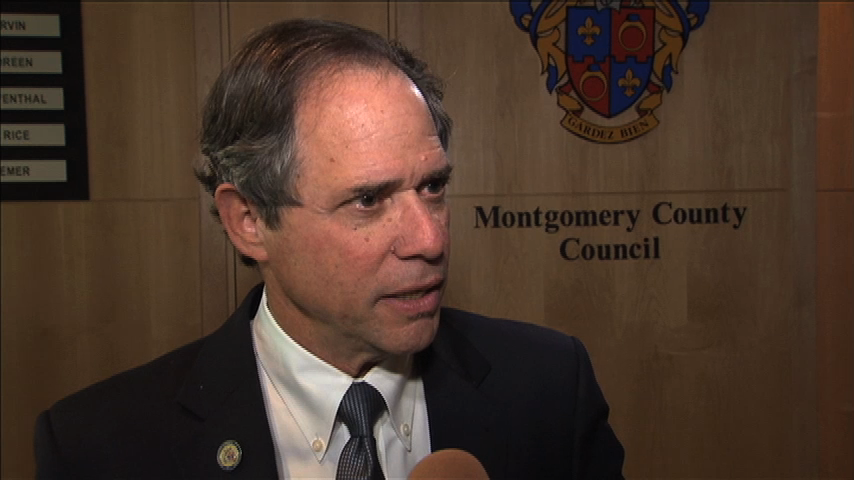
“People First Plan”
 Montgomery County Councilmember Roger Berliner, who chairs the Council’s Transportation, Infrastructure, Energy and Environment Committee, made the following statement on October 7, prior to the committee’s first work session on the draft Countywide Transit Corridors Functional Master Plan.
Montgomery County Councilmember Roger Berliner, who chairs the Council’s Transportation, Infrastructure, Energy and Environment Committee, made the following statement on October 7, prior to the committee’s first work session on the draft Countywide Transit Corridors Functional Master Plan.
Statement of Councilmember Berliner:
“This morning, our Committee begins its review of the Draft Countywide Transit Corridors Functional Master Plan recommended by our Planning Board.
“It is as ambitious as it is necessary. It would create, if all 81 miles along eight corridors were constructed, the most extensive rapid transit system in the country. For a community that has suffered through decades of some of the worst traffic congestion in the nation—traffic that is projected to only get worse not better—rapid transit is considered by our planners, the County Executive and the County Executive’s Transit Task Force, to be our most promising, cost-effective option. Doing nothing is not an option. Just imagine what it would be like—and what the benefits to our community would be—if we were able to describe Montgomery County as having the finest transit system in the county instead of the worst traffic
“And it isn’t as though we just thought of this yesterday. As Dr. Orlin’s packet observes, portions of three of the eight corridors—Georgia Avenue, Viers Mill and Rockville Pike—are already master planned for rapid transit and more than $10 million of County dollars has been allocated for that purpose.
 “That said, at the heart of this plan and our future work—and I stress the phrase “future work”—is a critically important, yet simple, concept. The concept is that, in using our scarce public resources—our roadways—we must prioritize moving people, not cars. It is a ‘People First Plan’ in effect.
“That said, at the heart of this plan and our future work—and I stress the phrase “future work”—is a critically important, yet simple, concept. The concept is that, in using our scarce public resources—our roadways—we must prioritize moving people, not cars. It is a ‘People First Plan’ in effect.
“Like all of my colleagues, I heard both much praise and many concerns expressed during our two full nights of public hearings on this plan. And as a District Councilmember, I listened very carefully to the concerns articulated by my constituents, too. But as I said at the beginning of those hearings, and as I repeat this morning, almost all of the concerns that have been expressed anticipate decisions that are not being made now, and will only be made after extensive study, public comment and future action by the County Council.
“It is understandable why the community has these concerns. The Planning Board document “recommends” various treatments in addition to the right of way decisions, including dual dedicated lanes in the median, some single dedicated lanes in the median, some dedicated curb lanes, some repurposed lanes, and some mixed traffic.
“We are not taking up those recommendations in this plan. In this plan, those recommendations will have the equivalent of an asterisk that makes it clear those are the Planning Board’s recommendations, not our conclusions. Those decisions will be left for a future Council after much more work is done by both the Planning Board and our Department of Transportation.
“The Planning Board itself—and the plan before us—recognizes that it too has more work to do. For this network to achieve its goal, we must ensure that it performs well, and for that to occur, we need performance standards. As the draft states on Page 63, “the Subdivision Staging Policy should be amended to incorporate standards for transit service in the recommended BRT network area that are consistent with the minimum level of service that would be provided by this Plan’s recommendations.”
“DOT has much work to do as well. Before any treatment is ultimately selected, we will need to know what impact it has on traffic generally, as well as on specific corridors, and we should make sure that we understand the impact on surrounding neighborhoods.
“All of this detailed work will be done before a future Council decides exactly how and where rapid transit will be employed in our County. What we have before us now is a necessary predicate to doing that detailed analysis. In that regard, it is no different than what we have done for major roads in our County forever, many of which, like M-83, have been in our master plans for years, and then studied and given more precise cost estimates. And yet, no decision has been made on that project or many like it.
“Our Committee’s plan for addressing the issues that are before us—rights of way, general station locations and the corridors themselves, as well as any issues my colleagues raise—is to have a day of big picture discussion, then have three worksessions on groups of corridors, leaving one additional session for follow-up items.
“We have asked the Planning Board to present its work, and for both the Executive Branch and the Transit Task Force to offer its guidance to begin this important discussion.”

Engage us on Facebook
Follow us on Twitter
Tweets by @mymcmedia